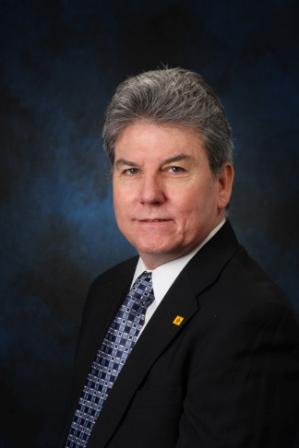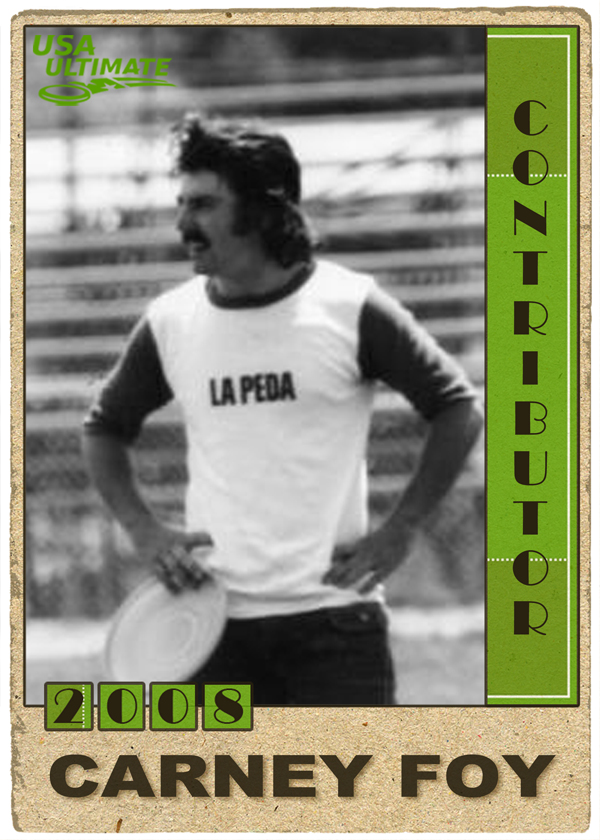Class of 2008
Carney Foy

Carney Foy
Hometown: Silver City, NM
Born: 1954 (Age 71)
Career Information

Carney Foy had a 17-year tenure as UPA Treasurer, which is the longest of any individual’s service to the UPA. He provided financial guidance and organizational skills that kept the UPA functioning in its formative years and was a key officer of the UPA from 1981 to 1997. Carney developed the systems to manage membership information, collect dues, and ensure that UPA Newsletters got to paying members. A Certified Public Accountant, Carney dutifully handled the finances, made sure the UPA paid its bills, and prepared the UPA’s financial statements. Before there was an office, Carney’s CPA firm served as the de facto UPA headquarters. Carney played Ultimate in the late 1970s and early 1980s and was a founding member of the La Peda Frisbee Club and the Arizona Plastic Surgeons.
After finishing college at Creighton University in Omaha, Neb., Carney returned to his hometown of Silver City, N.M. and started playing disc sports with local friends. They decided to host what they called the New Mexico State Championships and invited disc players from Albuquerque down for a day of overall events capped off with an Ultimate game at the end of the day. They got hooked on Ultimate and formed a team called La Peda (“the Binge”). Carney played in a variety of tournaments throughout the southwest and California (where he met TK) in the late 1970s and early 1980s. Carney was a founding member of the Arizona Plastic Surgeons as well. Unfortunately, he developed arthritis in his knees and so his playing days were cut short by the mid-1980s.
Contributions & Service
- 1981-1997: UPA Treasurer/Director of Finance
- According to the history book, Ultimate: The First Four Decades, Carney’s 17-year tenure as a UPA officer is the longest tenor of any individual’s service to the UPA.
Interview
Describe your major contributions to the growth and development of Ultimate?
When I took over the position as treasurer from TK, I received the UPA checkbook (with about $150 in the account) and a printed list of members, along with the admonishment that the Newsletter was already overdue. From scratch, I developed the systems to manage membership information and ensure that the Newsletter (usually) got to the paying members. I also made sure that the UPA paid its bills and kept going as an organization. I responded to each new level of complication – e.g. the requirement that players be UPA members to play in the Nationals’ series, the introduction of new divisions — with a can-do attitude that found a way to actually get things to work. It was only after the UPA headquarters in Colorado had sufficient permanent staff and organizational capabilities that the finance and membership functions were transferred from Silver City in 1997.
How did your contributions impact the sport and/or its organization?
I provided organizational skills that kept the UPA functioning in its formative years. Before there was an “official” office, my CPA firm served as the de facto headquarters. By being located in one place for as long as it was, it gave the UPA a standing presence that helped minimize problems from frequent moves that otherwise could have hamstrung it.
How would the sport or its organization be different if you hadn’t made your contributions?
It is unclear whether the UPA could have survived into the late-1980s without my contributions. Again in the early 1990s after Neal Dambra stepped down as Executive Director and with the subsequent succession problems, the UPA benefited from having its membership and finance functions maintained in a steady fashion out of Silver City.
Why did you do what you did?
Remarkably, I responded to an advertisement in the UPA Newsletter for a new treasurer. With arthritic knees, I wanted to find a way to stay involved in the sport. Furthermore, the $150/month stipend was sufficient enough to make the finance payments for the Apple computer I was going to need to buy to do the job. As time went on, I carried on the function as a labor of love for the sport and out of a sense of duty as well.
During which years did you make your principal contributions? How much time did you typically spend in making your contributions during your peak years?
I was the UPA Treasurer/Director of Finance from 1981-97. The job tended to be quite seasonal, as dues for much of my tenure were typically collected either at the beginning of the spring or fall season just prior to sectionals. Maintaining and updating the database during those periods was more than a full-time job over a period of around 3-4 weeks. My wife, Creta, helped out and over the years did much of the data entry required. Otherwise, as a qualified CPA, I dutifully handled the finances for the UPA and prepared the financial statements.
Has you organized Ultimate tournaments, leagues, teams, etc.?
I helped organize La Peda Ultimate Club and the Arizona Plastic Surgeons. I also helped organize the New Year Ultimate Fest, one of the longest-standing tournaments in the country.
Why do you believe you are worthy of being inducted into the Ultimate Hall of Fame?
I am one of the pillars that has allowed the UPA to still be around 26 years after its founding. I served as the administrative and organizational backbone of the UPA for 17 years. No other individual has served the UPA for as long. I developed all the membership databases and was the main tie with the membership for over half of the existence of the UPA. I provided the financial guidance to the UPA directors (several of whom lacked financial acumen) that kept the organization solvent through its formative years. I performed the extremely important, yet somewhat tedious, tasks of database management and accounting and for very little compensation over a very long period of time.